Wartime Manila Tour by Don’t Skip Manila
It’s been two years since my Let’s Explore Manila series came out and until today Manila never failed to amuse me. Some of you might be planning for a relaxing vacation this summer and you are probably thinking of Palawan or Boracay at this moment. If you’re on a tight budget, you might consider exploring the wonders of Rizal, hit the pristine beaches of Batangas or explore plenty of historical sites in Cavite.

Of all the amazing places in Luzon, have you ever consider Manila as your top go-to destination? We often think of Manila as an overly crowded place, a traffic-congested city and a place that is commonly wired to poverty. On a brighter side, Manila is also regarded as one of the best shopping destinations in Asia. However, Manila is more than just a shopping and financial hub. In fact, Manila was once known as the Paris of Asia, world’s global hub for fashion, art and culture. Manila may not be as grand as it used to be but it never loses its glory.

Last Saturday, I was lucky enough to be part of a historical tour. Wartime Manila is a walking tour organized by Don’t Skip Manila that aims to reintroduce Manila to both local and foreign visitors. As what the project name connotes, Anne Uy and Andrei Julian, the people behind Don’t Skip Manila encourages everyone to give Manila a chance. They are aiming to bring Manila back to its former glory through their walking tours that proves Manila has so much to offer.
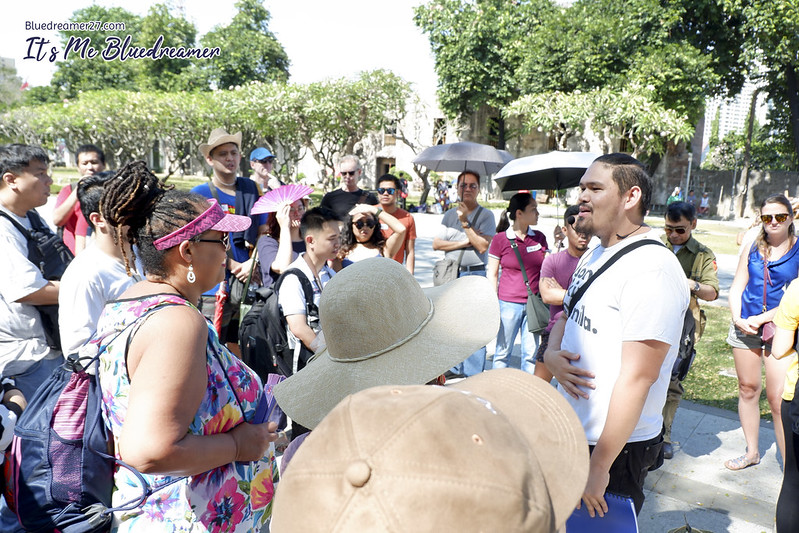
Don’t Skip Manila offers various walking tours from Intramuros to Quiapo to Sampaloc and Ermita. Last Saturday, they organized their very first Wartime Manila tour that aims to educate tourists about the Pre-Hispanic Manila and Manila during the second world war. The event commenced in Fort Santiago and concluded in Memorare : Manila 1945 Monument to commemorate with the Battle of Manila that took place from February 3 to March 3 1945.
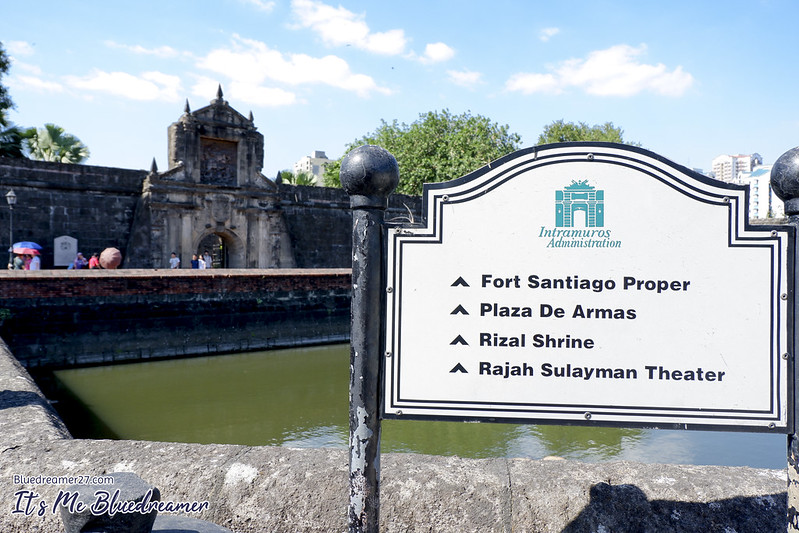
Fort Santiago
I have been to Intramuros for countless times and Thought I had enough knowledge about the place and yet this tour made me realized that there is really so many things to discover. The first part of the tour took place in Fort Santiago. Sir Andrei took us back in time during the Pre-hispanic era. He told us the history behind the Fort Santiago and how it was strategically built. From Rajah Sulayman who first inhabited the area to our National Hero Jose Rizal who spent his last remaining days in Fort Santiago before his execution.
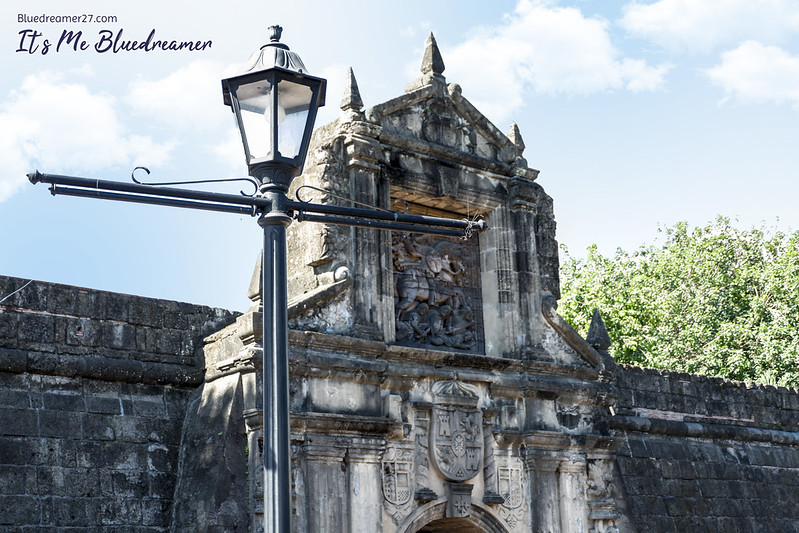 You can read more about Fort Santiago in Let’s Explore Manila series. Check : Let’s Explore Manila : Fort Santiago
You can read more about Fort Santiago in Let’s Explore Manila series. Check : Let’s Explore Manila : Fort Santiago
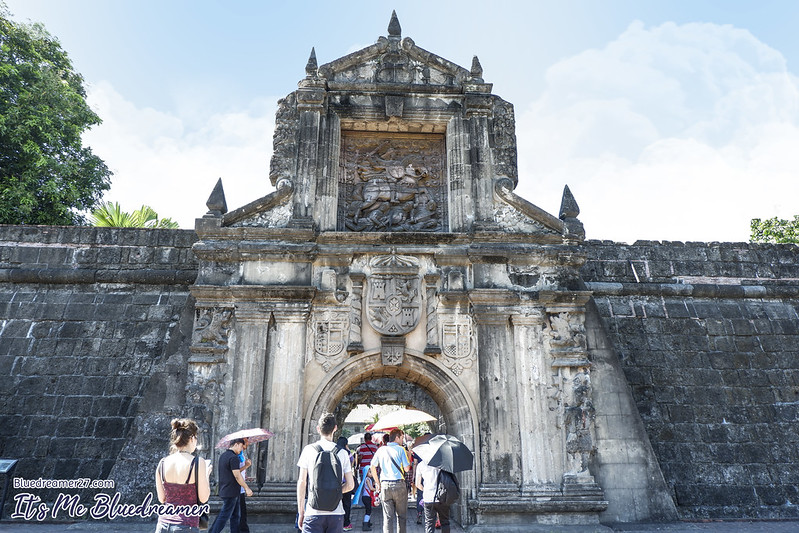
The facade of Fort Santiago. It is adorned with a relief of Saint James (The Muslim Slayer) and is presented with intricate details. By the way, did I mention that joining our walking tour is Mr Ivan Dy of Old Manila Walks?
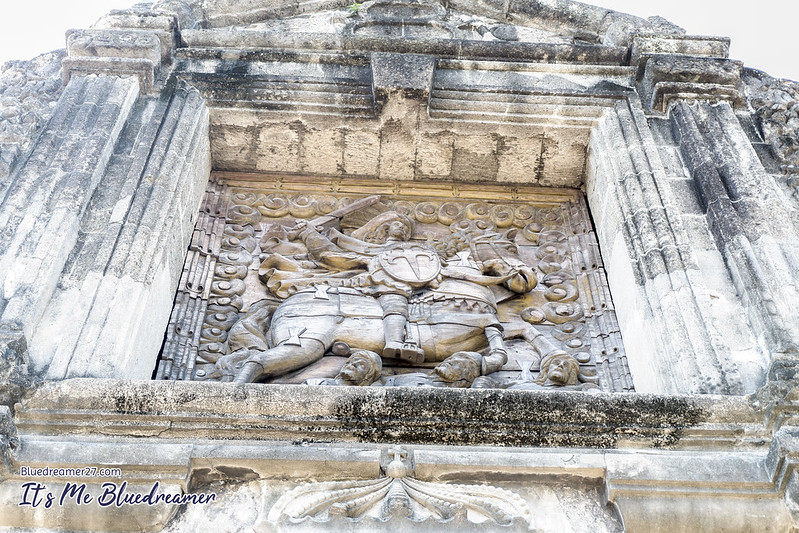
A closer look of the relief. Saint James is the Patron saint of Spain and is also known as the Muslim Slayer because of the legend that he miraculously appeared hundreds of years after his death to fight in the mythical battle of Clavijo in Spain.

Rajah Sulayman Theater
We entered the Fort Santiago and stopped by at our next destination. This time, we explored the ruins of the Rajah Sulayman Theater. It was indeed another exciting piece of history of Manila. The ruins of this old Spanish Barack once became the stage for Philippine Educational Theater Association or simply PETA, hence the name Rajah Sulayman Theater.
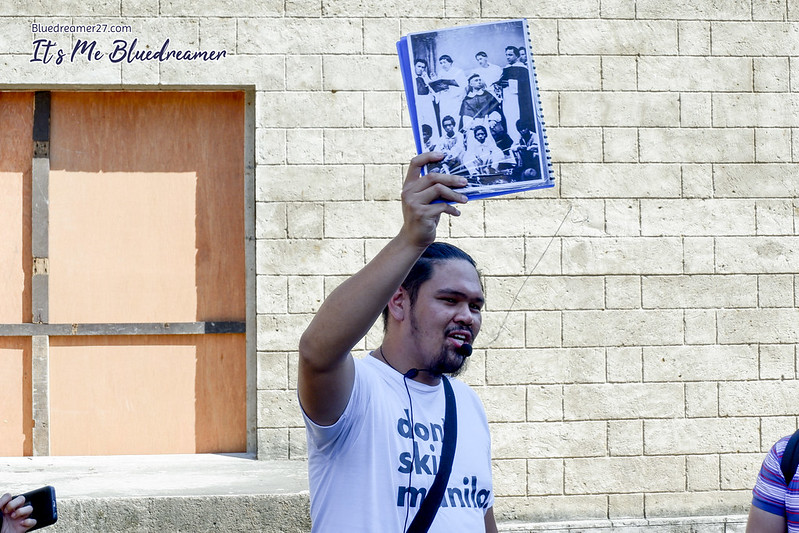
The tour also highlighted how powerful the Catholics are during that period.
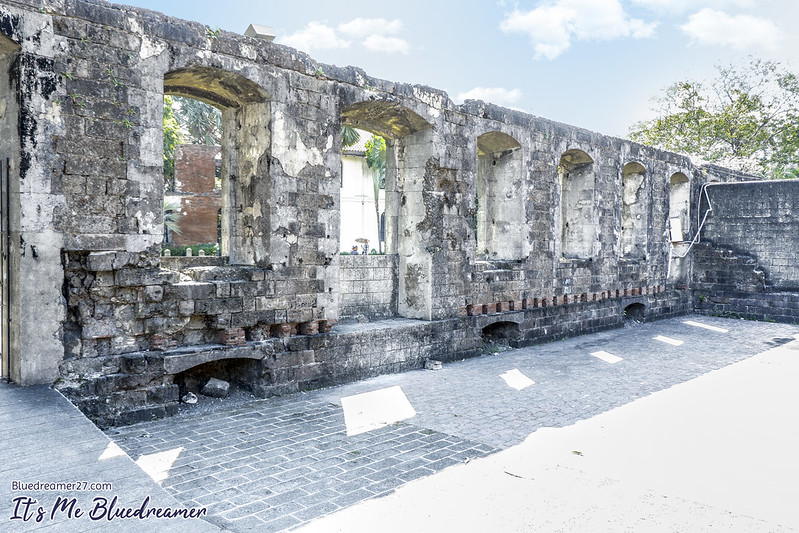
The ruins of Rajah Sulayman Theater

It is interesting to note that this open-air theater was designed by Leandro V. Locsin, a National Artist.
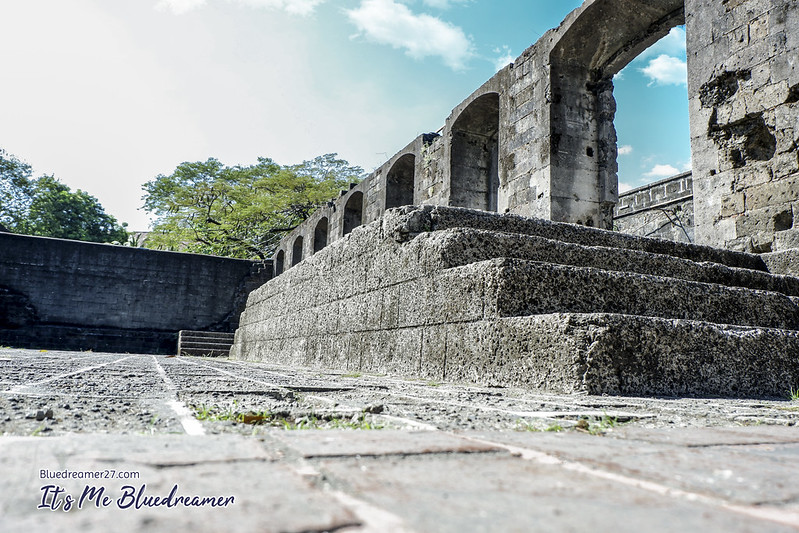
There were about 300 plays were adapted, translated, written, published, and performed by PETA by the 1990s.
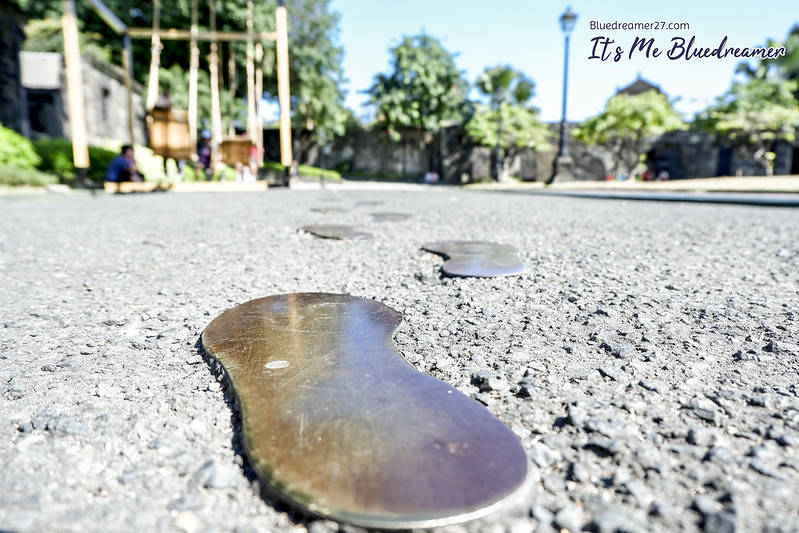 Bronze footsteps representing the final walk from his cell to the location of the actual execution.
Bronze footsteps representing the final walk from his cell to the location of the actual execution.
Rizal Shrine
Following our brief tour in Rajah Sulayman Theater, we were guided to another popular spot in Fort Santiago, the Rizal Shrine. It is a museum dedicated to the lifework of our national hero. Interestingly, it was my first time to visit Rizal Shrine after so many failed attempts. The last time I went to Intramuros to visit the Shrine, the Fort Santiago was under renovation and the Museum was closed. It has been my personal goal to visit all the Museums in Intramuros so this tour puts another check on my list.
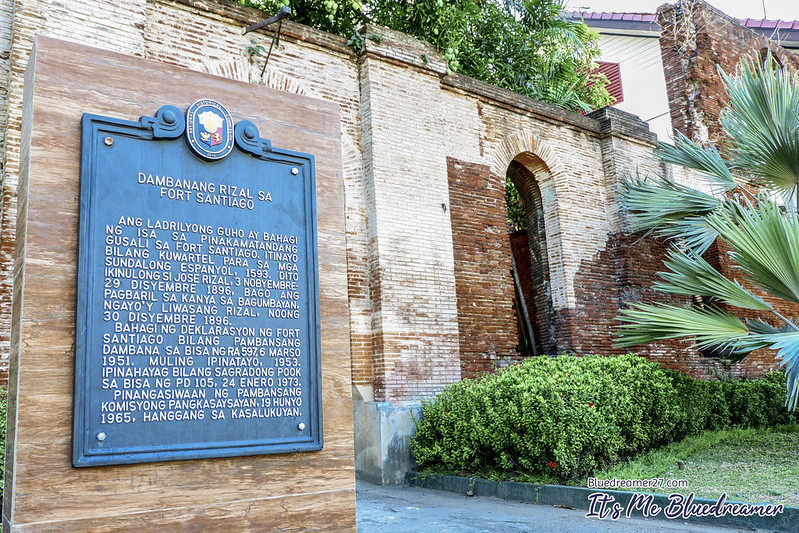
The historical Marker near the entrance of Rizal Shrine
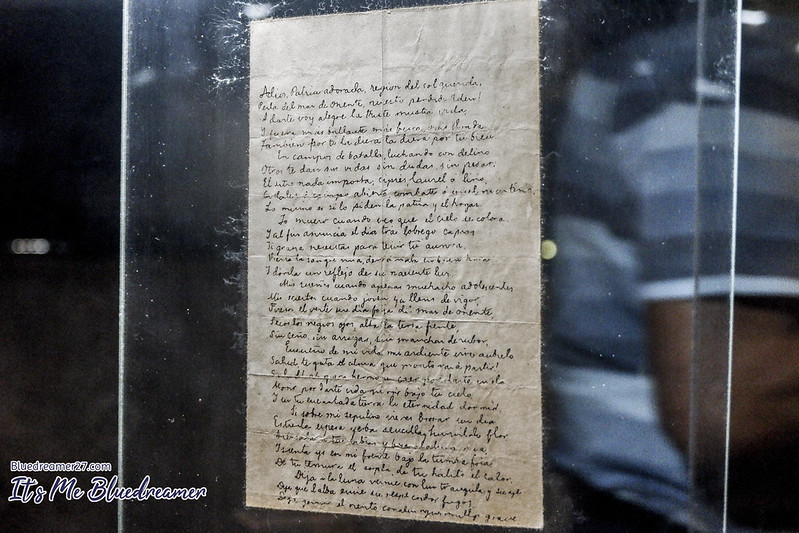
There’s too many to explore in this museum so I might create a separate entry for this tour. Some of the most notable highlights of Rizal Shrine is the original copy of Rizal’s “Mi Ultimo Adios”, a poem written by him on the eve of his execution.

Another interesting display in this museum is the piece of Rizal’s vertebra where the bullet hit him during his execution.
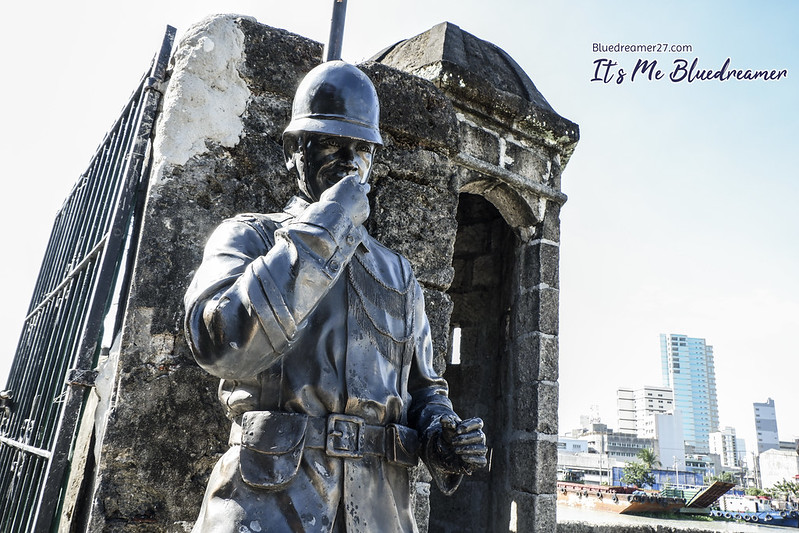
The Dungeons
Outside the shrine are these eerie dungeons. They used to be the storage vaults and powder magazine of Baluarte de Santa Barbara. The Spaniards however built a new powder magazine on top of the baluarte and converted these storage vaults into prison cells.
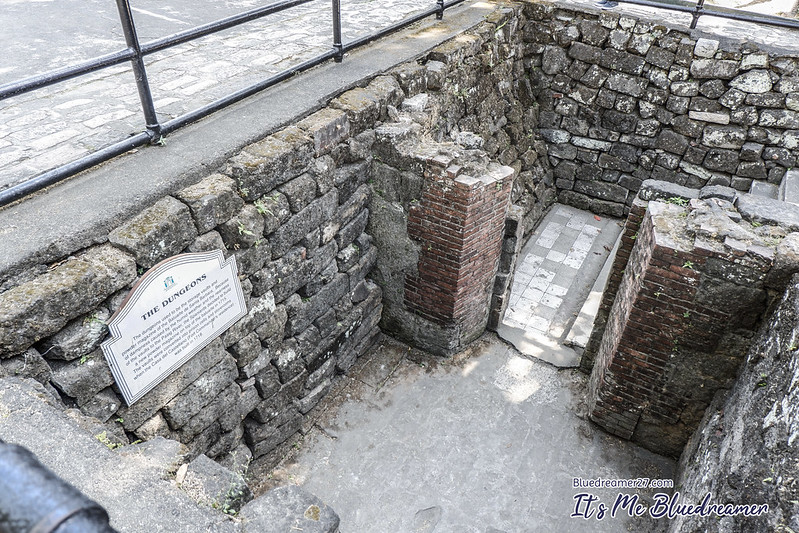 The dungeons
The dungeons

Just beside the dungeon is a memorial cross built in memory of the victims at Fort Santiago. In fact, on the exact site lies the mortal remains of approximately 600 Filipinos. Their bodies were found inside a nearby dungeon.
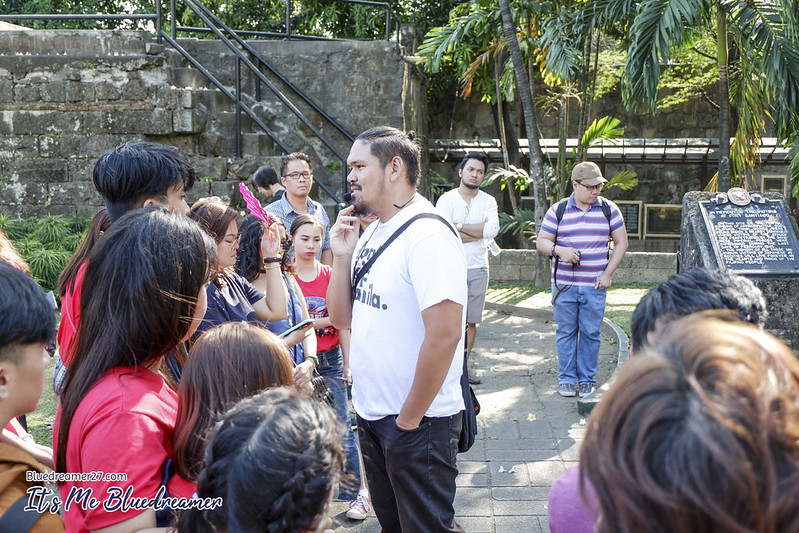
Tourists were encouraged to give at least 30 seconds of silence to pay respect for the poor unknown victims of Japanese Atrocities during the second world war.
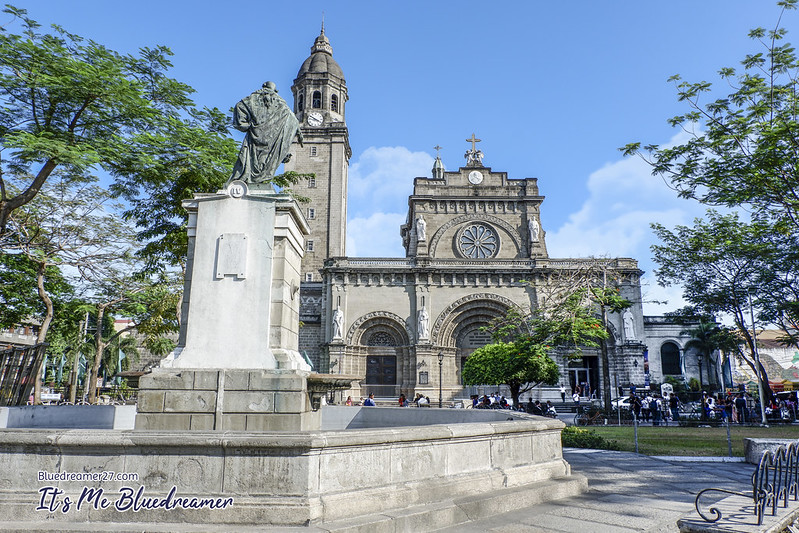
Plaza De Roma
We left the Fort San Tiago and headed to our next destination. Prior to it, Ms Anne and Sir Andrei gave us a refreshing treat, a dirty ice cream, a traditional Filipino ice cream. Sir Andrei made a wonderful segue to our next topic, the American invasion and how it drastically changed Manila after the long Spanish colonization.
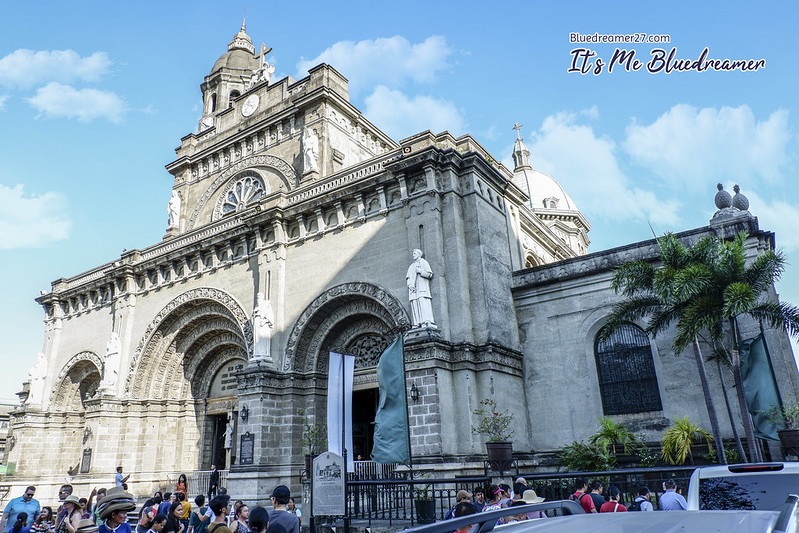
This part of the tour highlights Manila in its former glory. Manila has gone through many transformations after the American War. Americans introduced the idea of free education in the country, we were introduced to some American foods like Hamburgers, Ice cream and yes, even Coca-Cola! Despite the influences, the country is still embracing the culture it adapts from the Spanish. The power of Catholic church however was significantly reduced due to the Religious freedom taught by the Americans.

Memorare – Manila 1945
The Wartime Manila tour concluded in a monument known as Memorare- Manila 1945. Honestly, i was not paying much attention with this monument until the Wartime Manila Tour. This monument which was unveiled in 1995 depicts a haunting image of hooded woman holding her lifeless child. Beside her are other six suffering figures. This monument signifies the chaos and the horror that Filipinos have experienced during the second world war. The monument was dedicated to all the innocent victims of the war, over 100,000 men, women, children and infants who were killed in Manila during its battle of liberation which took place from February 3 to March 3 of 1945.

The image of the hooded woman in great despair while holding her lifeless child.

Sir Andrei also brought up the heartbreaking story of Nana Rosa. María Rosa Luna Henson or simply Nana Rosa was the first Filipina who made public in 1992 her story as a comfort woman (military sex slave) for the Imperial Japanese Army during the Second World War.
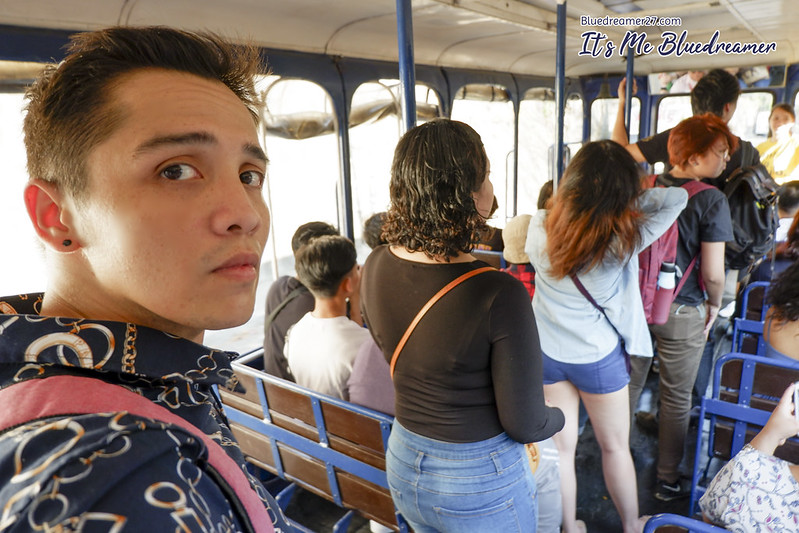
After the walking tour, all of us were taken to Baluarte De San Diego where the Manila Transitio will take place on the same day. Some of us experienced riding the Calesa while others had the chance to ride the Tranvia. It was my first time and it was such a great experience!.
About Don’t Skip Manila
Don’t Skip Manila is truly an amazing project. The campaign of reintroducing Manila to people by telling its rich history is a remarkable concept that everybody should support. Ms Anne and Sir Andrei did an excellent job and they are absolutely knowledgeable on what they are doing. I love how they incorporate some humor during the tour which makes the entire trip more exciting. There was never a dull moment indeed. If you are interested, here are their current Walking tour line up for the month of March.
 Follow them on their Facebook Page @ Don’t Skip Manila for booking and to get more updates on their latest walking tours.
Follow them on their Facebook Page @ Don’t Skip Manila for booking and to get more updates on their latest walking tours.

Pingback: Exploring Casa Manila in Intramuros - It's Me Bluedreamer!
WOW!!! I felt the tears begin as I read through manilla’s sad history. The memorial really got to me. Incredible history lesson. And when you were done with the tour, I bet you felt much different from when you started.
Thanks for sharing! I didn’t know that Manila is so wonderful and it has such architecture! I really like Fort Santiago and the ruins, examples of its old history. I hope to visit it one day!
I like the idea of them targeting both tourists and those who live in the area. It’s amazing how much we can learn about the city we live in. Seeing the old forts and ruins is really neat.
Such a beautiful place to visit Manila. Thanks for sharing with us.
What a wonderful way to gain a better understanding of the history of Manila and its monuments. It has such a rich and complicated history.
Wow amazing! I had no idea there were so many awesome things to do in Manila. When I lived in the Philippines, I didn’t spend much time in Manila. I definitely need to spend a few days looking at those sites next time I visit.
I haven’t been to Manila before but looks like a place worth a visit. Going to add it to the list of places I want to visit.
Fransic – https://querianson.com/
I miss Intramuros so much! I hope I can visit again. Great tour! Thanks!
I love Manila and can’t wait to return one day soon! Your post has me missing my traveling adventures!
It’s nice to see such tours like this. It helps us remember the history and relived with it. I remember googling this before as I intend to go here when I visit Manila in the future.
I’ve been to Manila few times but haven’t had the chance to visit these places there. Thanks for sharing this, might consider visiting there the next time I come.
looks like an amazing time. i miss traveling so much
Pingback: The Newly Renovated Lagusnilad Underpass of Manila - It's Me Bluedreamer!